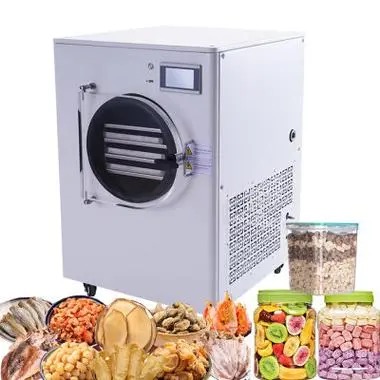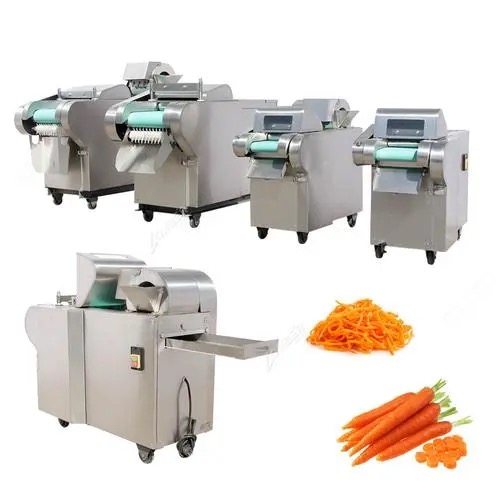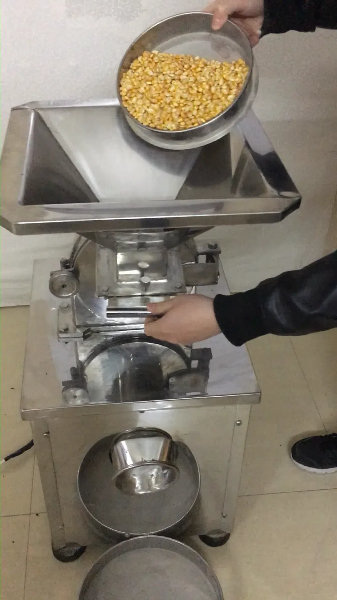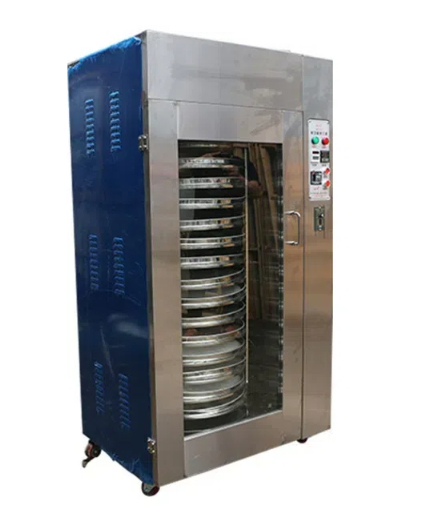
Content Menu
● Introduction to Food Dehydrators
● How Food Dehydrators Work
● Benefits of Using a Food Dehydrator
● Popular Types of Food Dehydrators
>> 1. Stackable Tray Dehydrators
>> 2. Shelf Tray Dehydrators
>> 3. Commercial-Grade Dehydrators
● Key Features to Consider When Choosing a Food Dehydrator
>> 1. Capacity
>> 2. Temperature Control
>> 3. Fan and Airflow
>> 4. Noise Level
>> 5. Ease of Use and Cleaning
>> 6. Energy Efficiency
● Popular Foods to Dehydrate
>> 1. Fruits
>> 2. Vegetables
>> 3. Herbs
>> 4. Meats
>> 5. Fruit Leathers
● Tips for Successful Food Dehydration
● Creative Uses for Dehydrated Foods
● Maintenance and Care of Your Food Dehydrator
● Conclusion
● Frequently Asked Questions
>> Q1: What is the best temperature for dehydrating most fruits and vegetables?
>> Q2: How long does it typically take to dehydrate food?
>> Q3: Can I dehydrate frozen fruits and vegetables?
>> Q4: How long can dehydrated foods be stored?
>> Q5: Is it safe to dehydrate meats for jerky at home?
Introduction to Food Dehydrators
Food dehydrators have become increasingly popular kitchen appliances for those looking to preserve food, create healthy snacks, and explore new culinary possibilities. These versatile machines remove moisture from various foods, extending their shelf life while maintaining nutritional value and intensifying flavors. Whether you're a health-conscious individual, an avid gardener with excess produce, or simply someone who enjoys homemade snacks, a food dehydrator can be a valuable addition to your kitchen arsenal.
How Food Dehydrators Work
Food dehydrators operate on a simple principle: they use a combination of warm air circulation and low heat to gradually remove moisture from food items. This process inhibits the growth of bacteria, mold, and other microorganisms that cause food spoilage. Most food dehydrators consist of several key components:
1. Heating element: Generates warm air to facilitate the drying process.
2. Fan: Circulates the warm air evenly throughout the dehydrator.
3. Trays: Perforated surfaces where food items are placed for drying.
4. Temperature control: Allows users to adjust the heat level for different types of food.
5. Timer: Helps monitor and control the drying duration.

Benefits of Using a Food Dehydrator
Investing in a food dehydrator offers numerous advantages for both culinary enthusiasts and health-conscious individuals:
1. Extended food preservation: Dehydrated foods can last for months or even years when stored properly.
2. Nutritional retention: The low-heat drying process preserves most of the food's original nutrients.
3. Space-saving food storage: Dried foods take up less space than their fresh counterparts.
4. Cost-effective: Reduce food waste by preserving excess produce or buying in bulk during sales.
5. Healthy snack options: Create nutritious, preservative-free snacks at home.
6. Versatility: Dehydrate a wide variety of foods, including fruits, vegetables, herbs, meats, and even make yogurt or raise bread dough.
Popular Types of Food Dehydrators
When shopping for a food dehydrator, you'll encounter several types, each with its own advantages:
1. Stackable Tray Dehydrators
These models feature a vertical design with stackable trays. They're typically more affordable and allow for easy expansion by adding extra trays. The Nesco Snackmaster Pro and the Presto 06300 are popular examples of stackable dehydrators.
2. Shelf Tray Dehydrators
These units have a box-like design with removable shelves. They often provide more consistent drying results and are easier to clean. The Excalibur 3926TB and the Cosori Food Dehydrator are well-known shelf tray models.
3. Commercial-Grade Dehydrators
Designed for heavy-duty use, these machines offer larger capacity and more powerful performance. They're ideal for those who dehydrate food in large quantities or run small businesses. The STX International STX-DEH-1200W-XLS is a popular commercial-grade option.
Key Features to Consider When Choosing a Food Dehydrator
To select the best food dehydrator for your needs, consider the following features:
1. Capacity
Determine how much food you plan to dehydrate at once. Smaller units with 4-5 trays are suitable for occasional use, while larger models with 9-12 trays are better for frequent or high-volume dehydrating.
2. Temperature Control
Look for models with adjustable temperature settings, typically ranging from 95°F to 165°F. This allows you to customize the drying process for different types of food.
3. Fan and Airflow
A powerful fan ensures even air circulation, resulting in more consistent drying. Some models feature horizontal airflow, which can be more efficient than vertical airflow systems.
4. Noise Level
Since dehydrators often run for extended periods, consider the noise level, especially if you plan to use it in shared living spaces.
5. Ease of Use and Cleaning
Look for models with dishwasher-safe trays and easy-to-clean surfaces. Digital controls and timers can also enhance user-friendliness.
6. Energy Efficiency
Check the wattage and energy consumption of the dehydrator, especially if you plan to use it frequently.

Popular Foods to Dehydrate
Food dehydrators are incredibly versatile, allowing you to preserve and create a wide variety of foods:
1. Fruits
Apples, bananas, berries, mangoes, and pineapples are excellent choices for dehydrating. They make great snacks and can be used in trail mixes, cereals, or baked goods.
2. Vegetables
Carrots, bell peppers, onions, and tomatoes dehydrate well and can be rehydrated for use in soups, stews, and casseroles.
3. Herbs
Preserve the flavors of fresh herbs like basil, oregano, thyme, and parsley by dehydrating them for long-term storage.
4. Meats
Create homemade jerky using beef, turkey, or even fish. Dehydrated meats make excellent high-protein snacks.
5. Fruit Leathers
Turn pureed fruits into healthy, chewy snacks that kids and adults alike will love.
Tips for Successful Food Dehydration
To achieve the best results with your food dehydrator, keep these tips in mind:
1. Prepare foods uniformly: Cut fruits and vegetables into even-sized pieces for consistent drying.
2. Pre-treat fruits: Dip sliced fruits in lemon juice or ascorbic acid solution to prevent browning.
3. Blanch vegetables: Briefly blanch vegetables before dehydrating to preserve color and nutrients.
4. Rotate trays: For even drying, rotate the trays periodically during the dehydration process.
5. Allow for proper air circulation: Avoid overcrowding the trays to ensure adequate airflow.
6. Store properly: Once dehydrated, store foods in airtight containers in a cool, dark place.
Creative Uses for Dehydrated Foods
Beyond simple snacking, dehydrated foods can be incorporated into various culinary creations:
1. Homemade spice blends and seasonings
2. Dried fruit and nut energy bars
3. Powdered vegetables for soups and sauces
4. Dehydrated meals for camping and backpacking
5. Decorative dried fruit for baked goods and cocktails
Maintenance and Care of Your Food Dehydrator
To ensure the longevity and optimal performance of your food dehydrator, follow these maintenance tips:
1. Clean trays and the interior after each use with warm, soapy water.
2. Check and clean the fan and heating element periodically.
3. Store the dehydrator in a clean, dry place when not in use.
4. Inspect the power cord regularly for any signs of wear or damage.
Conclusion
Food dehydrators offer a fantastic way to preserve food, create healthy snacks, and explore new culinary possibilities. By understanding the different types of dehydrators, key features to consider, and best practices for use, you can make the most of this versatile kitchen appliance. Whether you're a seasoned food preservationist or a curious beginner, a food dehydrator can open up a world of delicious and nutritious options for your kitchen.

Frequently Asked Questions
Q1: What is the best temperature for dehydrating most fruits and vegetables?
A1: The ideal temperature for dehydrating most fruits and vegetables is between 125°F and 135°F. This range is low enough to preserve nutrients but high enough to prevent bacterial growth during the drying process.
Q2: How long does it typically take to dehydrate food?
A2: The drying time can vary greatly depending on the food type, thickness of slices, and the dehydrator's efficiency. On average, fruits can take 6-12 hours, vegetables 4-8 hours, and meats for jerky 4-6 hours. Always refer to your dehydrator's manual for specific guidelines.
Q3: Can I dehydrate frozen fruits and vegetables?
A3: Yes, you can dehydrate frozen fruits and vegetables. In fact, frozen produce is often pre-blanched, which can save you a step in the preparation process. However, be aware that the texture of the final product may differ slightly from fresh produce.
Q4: How long can dehydrated foods be stored?
A4: Properly dehydrated and stored foods can last anywhere from 6 months to a year, or even longer in some cases. Factors affecting storage life include the food type, dryness level, and storage conditions. Always store dehydrated foods in airtight containers in a cool, dark place.
Q5: Is it safe to dehydrate meats for jerky at home?
A5: Yes, it is safe to make jerky at home with proper precautions. Use lean meats, marinate with salt and acidic ingredients, and heat the meat to 165°F before dehydrating to kill any harmful bacteria. Follow USDA guidelines for safe jerky preparation to ensure food safety.












